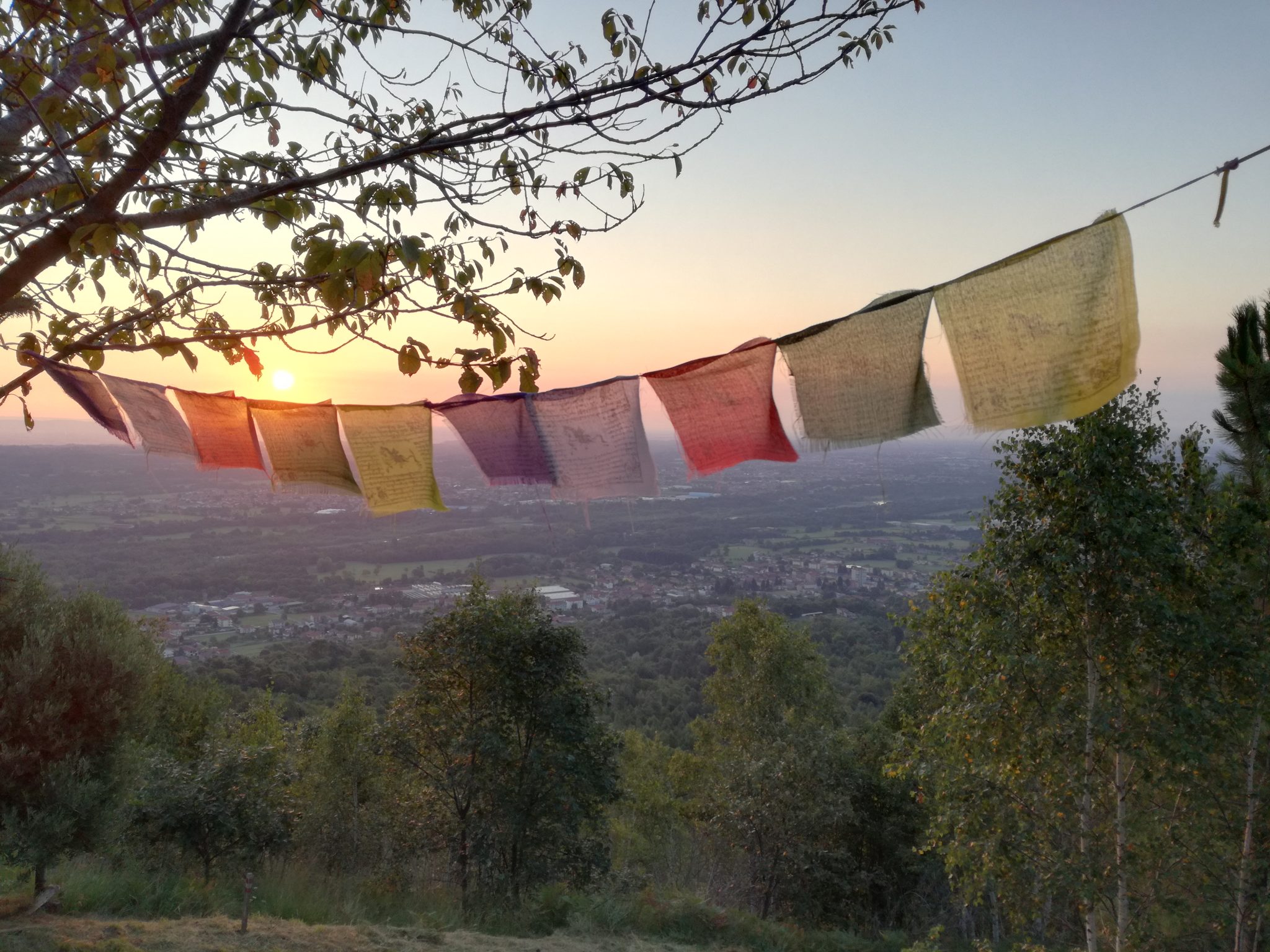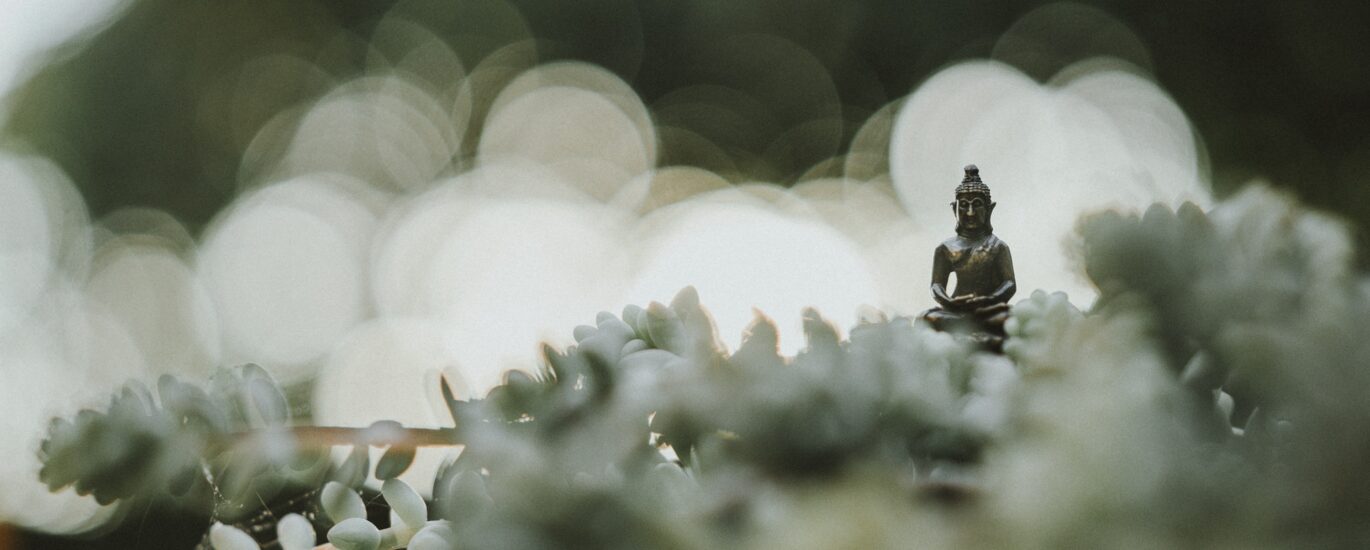I recently added The Tibetan Book of the Dead to my death doula library. The more I learn about Tibetan Buddhism the more I see how it helps people, no matter their faith, die with greater joy. It can especially help people who feel anxiety or fear when contemplating their own end-of-life experiences.
Even Death is Impermanent
Living in a society that sees death as “losing a battle” means those at the end of life can feel isolated and alone. Loved ones are often scared to visit a dying person. It forces them to face the inevitability of this universal experience. And they’d rather not.
However, for Tibetan Buddhists, life isn’t over when death comes. It’s a new beginning.
Unless someone escapes the cycle of life, death, and rebirth through nirvana or enlightenment, Buddhists believe people are reborn again and again. The Tibetan Book of the Dead gives specific instructions on this front.
But you don’t have to believe in reincarnation to find value here. In fact, exploring new outlooks on dying helps you rid yourself of fear. Or at least reduce it! The more you learn about death, the more comfortable you become with this eventuality.
Bardo Thodol
Padmasambhava, an Indian man, wrote these teachings in the eighth century. We don’t know much about this Buddhist master, except that he didn’t think people could handle his teachings, so he and his followers hid the book for over 600 years.
Afterward, Bardo Thodol, or “Liberation Through Hearing During the Intermediate State,” became The Tibetan Book of the Dead. It was published in English in 1927. (His Holiness The Dalai Lama, spiritual leader of Tibetan Buddhists, gave his blessings for the 1993 version.)

Not an Easy Read
To fully understand the messages contained within the text, you have to read The Tibetan Book of the Dead from cover to cover. And then you still might be confused.
Online and in-person classes might help shed light on its more complex themes. Unlike religious doctrine, however, you don’t have to fully believe in all aspects of Buddhist teachings to benefit from them.
Take what works for you and discard what does not.
For example, I don’t think angels and demons exist, either in this life or the next one. I’m not so sure I believe in an afterlife. And after the last few years especially, the idea of being reborn back into this world is beyond comprehension.
And yet, helping people to transition peacefully into the unknown is valuable. This book helps me do just that.
Six Bardos or “In-Between States”
The book explains and prepares readers for six key states between living and dying. These include:
- Kyenay bardo: between life and death
- Milam Bardo: between sleeping and waking
- Samten Bardo: between meditation and awakening
- Chikhai Bardo: death
- Chonyid Bardo: when apparitions appear (the type depends on karma)
- Sidpa Bardo: rebirth, which happens after the soul sees its new parents
The Tibetan Book of the Dead is meant to guide the soul into an afterlife. One of the most helpful sections contains instructions on how to dissolve our ego. This dissolution allows us to fully appreciate love, peace, and happiness.
When we are no longer attached to our body, this liberates us.
Buddhists believe that if we don’t achieve awareness, a less ideal rebirth is the result.
Overall these readings bring comfort. No matter what you believe is going to happen to your soul, feeling the ego die or dissolve, is often euphoric. Letting go is a relief.
Anyone who has experienced ego death in psychedelic journeys or other peaceful settings can attest to this.
The Moment of Death
When we aren’t afraid of an upcoming experience, we can better prepare for it. Buddhists are all about preparing for death. Some of the ways they do this include:
- Studying teachings and texts
- Giving away possessions
- Surrounding oneself with comforting loved ones
- Forgiving others
- Letting go of attachments
My experience learning from both Tibetan and Zen Buddhists includes practicing meditation. Whether we’re exploring guided death, mindfulness, or loving-kindness meditation, the data is quite clear. This helps reduce death anxiety and fears.
I also find that reciting The Five Remembrances helps us face death with greater ease. These five contemplations are:
- I am of the nature to grow old. There is no way to escape growing old.
- I am of the nature to have ill health. There is no way to escape having ill health.
- I am of the nature to die. There is no way to escape death.
- All that is dear to me and everyone I love is of the nature to change. There is no way to escape being separated from them.
- My actions are my only true belongings. I cannot escape the consequences of my actions. My actions are the ground upon which I stand.
My Experience with the Book
The Tibetan Book of the Dead contains lovely passages to be read by a caregiver or teacher as someone dies. Recently, I had a client who asked me to read these passages as her beloved mother actively died. Family members with varying degrees of religious involvement joined us, mostly devout Catholics.
At one point, I could sense a shift in energy in the room. A nephew stood to tell me of the dying woman’s relationship with Jesus Christ. A few relatives nodded and talked about how she would soon be with Jesus.
I gave them all of my attention and compassion.
“Is there a psalm or prayer you’d like me to read?” I asked.
No, they said. The nephew just wanted to share with us his aunt’s religious beliefs. They asked me to continue reading from the Tibetan passages.
I did so but changed some of the words. I replaced Buddha with Jesus and meditate with pray. This was done respectfully. The overall theme remained unchanged, I just used words that felt more familiar to the people in that room.
As a result, the energy evolved, and loved ones seemed calm and more peaceful.
Perhaps one day, as I learn and grow, I’ll discover that it wasn’t altogether proper for me to do this. However, I stand by it with what I know today. Using more familiar terms helped this family accept a message they needed to hear.
Their beloved relative died a few hours later, surrounded by loved ones who found grace and assistance in a blend of spiritual traditions.

Letting Go
In the last Bardo or in-between state, the soul hopefully recognizes that everything is a projection of his or her subconscious. For Buddhists, this recognition allows the soul to avoid an unpleasant rebirth. For non-Buddhists, this recognition leads to a more peaceful and joyful transition.
If you’d like support to ensure your own good death, contact me at Anitya Doula Services today.



One thought on “How Tibetan Buddhism Helps People Die With Joy”